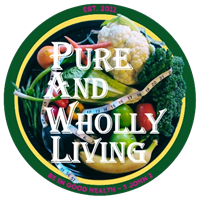Carrots are pretty and full of flavor and nutrients. They can be stored fresh for months, but can also be canned, frozen, or dried. Carrots are equally at home with sweet or savory dishes.
If you have carrots in your refrigerator or your pantry, then you can create stuffing for vegetables, quick breads, muffins, cookies, puddings, chips, salads, soups, sauces, and roasted, grilled, or baked vegetable dishes. Of course, there is always the ever popular carrot stick that’s good for dipping or eating on its own.
There is a type of carrot for everyone. Horse carrots are big, irregularly shaped carrots, sometimes with splits in them. Horse carrots tend to be older and more fibrous, making them good for long cooking in soups or stews. True baby carrots are miniature carrots, bred to resemble whole adult carrots. They are sweet and tender, requiring hardly any cooking at all. Small, round carrots are found in the springtime and are good for glazing, as their shape makes it easier for sauce to adhere.
Those perfectly formed baby carrots sold in stores are larger carrots that have been cut, by machine or hand. This type of baby carrot was the producer’s answer to making horse carrots more popular with consumers. Baby carrots have not been processed, except to be cut.
To peel or not to peel has been a long-standing carrot debate. If you know you’ve gotten your carrots from a reliable source (as in not grown with pesticides and perhaps having a chemical residue), then scrubbing is fine. Carrot peel does have a bit of bitterness, so cooks making vegetable stocks and broths tend to peel their carrots to avoid any bitterness in their long-cooking dishes. Aesthetically, the color of cooked carrots may be brighter when peeled. It’s up to you what you’d like to do.
Grated raw carrots can be added to green salads, coleslaw, pasta or potato salad, as well as used as a garnish for soups.
Carrots are cook-friendly. They will retain their nutrients and their color if you treat them with just a bit of care. Remember that the least amount of cooking liquid is always the best way to preserve nutrients in cooking vegetables, as well as cooking them as quickly as possible. To simply cook carrots, cover carrots with boiling water or boiling vegetable stock. You don’t want carrots to sit in cold water as the water heats, as this destroys some of the nutrients. Also, drain cooked carrots as soon as possible so they are not sitting and losing nutrients.
Here’s a fast and easy lemon carrot recipe: Cut up old carrots and then steam or boil them until just tender and drain. Return the carrots to the pot. For every 2 cups of steamed carrots, use 2 teaspoons of fresh, chopped parsley, 1 tablespoon of vegan margarine, and 2 tablespoons of lemon juice. Toss the carrots with these ingredients and reheat just until carrots are hot. Serve lemon carrots as a side dish or purée the dish and use it as a base for “creamy” vegetable soup.
Carrot juice can be used as a cooking liquid for vegetables, rice, soup, and pasta. In fact, if you’ve carefully cleaned your carrots, you can cook pasta, rice, or other vegetables in the carrot cooking water. This is a thrifty way to save water and to get as many nutrients as possible from your carrots.
What’s your favorite way to eat carrots? Share with us in the comments below!

Steaming in chicken stew